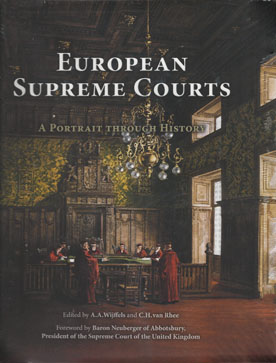
The European Supreme Courts: A Portrait through History introduces the largely forgotten history of our common European legal past.
Written by 28 leading experts in the field, this publication surveys 1,000 years of legal history across the continent of Europe, focusing particularly on the role of Supreme judicators within national and state jurisdictions, and latterly on the relationships between national supreme courts and supra-national courts in Europe.
Europe knows many different national legal systems with profound differences between countries with regard to national legal traditions, legal history, and the organisation and training of the judiciary. Nonetheless legal practitioners, lawyers, students and officials share the same European supreme courts.
At these supreme courts judges from various nationalities wear the same robes, apply the same law and speak the same language. The principles of unity of law, legal security, the independence of the judiciary, the protection of human rights and the rule of law apply both at the European level and within the domestic legal systems. The case law of these supra-national courts is regarded as an authority throughout Europe.
The European Supreme Courts shows how a system of supreme courts, common European legal education, and cross-references to each other's case law were part of the forensic practice in the historical European states whose modern successors are now members of the Council of Europe and the European Union.
In our current European supreme courts there are many echoes of Europe's legal history. However, the rise of nationalism and the nation state from the beginning of the 19th century and the impact of totalitarian political systems in the 20th century resulted in the suppression of the common European legal culture, tradition and court systems. This book examines the continuities and sets the contemporary role of the European supreme courts within the context of a rich legacy of legal traditions, culture and history across Europe.